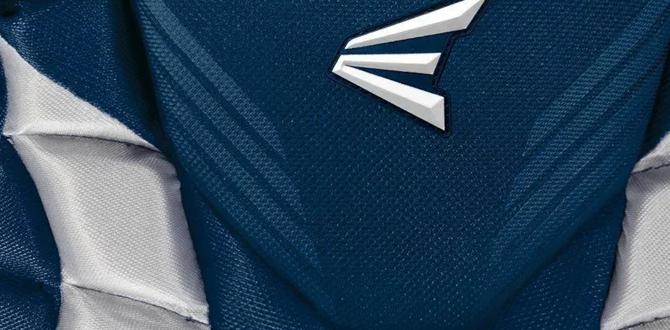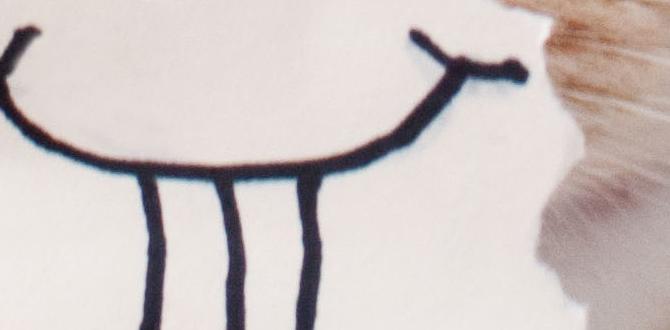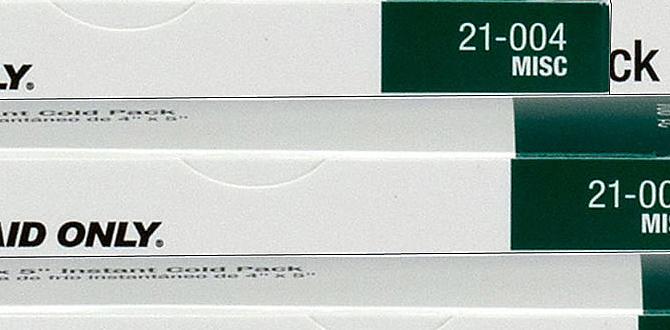Quick Summary: A catchers shin guards set is a fundamental piece of protective equipment designed to shield a catcher’s legs from foul balls, errant pitches, and collisions. Choosing the right set ensures comfort, mobility, and safety, allowing catchers to focus on their game without worry.
Catchers Shin Guards: Your Ultimate Guide to Essential Gear
Hey baseball fans! John P. Miller here. Ever felt that sting of a foul ball off your shin, or worried about what might happen if a pitch gets past the mitt? As a catcher, your legs are crucial, and protecting them is non-negotiable. It can feel a bit overwhelming with all the different styles and features out there when you’re just starting out. But don’t sweat it! We’re going to break down catcher’s shin guards so you can pick the perfect set, feel confident behind the plate, and play your best game. Let’s get you covered from the knees down!
Why Catcher’s Shin Guards Are a Game-Changer
Behind home plate, a catcher is the unsung hero, the field general, and a lightning rod for fast-moving baseballs. Your uniform is designed for protection, but some areas need extra reinforcement. This is where catcher’s shin guards come in. They are specifically engineered to absorb the impact from foul tips, wild pitches, and even those jarring collisions at home plate. Without them, you risk painful bruises, potential fractures, and long stints on the sidelines – and nobody wants that!
Think of them as your personal leg armor. They’re not just about preventing immediate pain; they’re about enabling you to stay in the game, perform your best, and develop your skills without the constant fear of getting hurt. A good pair will feel like a natural extension of your leg, offering protection without hindering your movement.
The Anatomy of Catcher’s Shin Guards Sets
So, what exactly makes up a catcher’s shin guard set? It’s more than just a piece of plastic strapped to your legs. These sets are designed with specific components to offer maximum coverage and comfort:
- Shin Plate: This is the core of the guard, typically made of durable plastic, ABS, or composite materials. It’s designed to deflect and absorb the force of impacts.
- Knee Cap: A crucial element for protecting the vulnerable knee joint. It extends over the kneecap and often incorporates padding for extra shock absorption.
- Ankle/Calf Padding: Beyond the main shin plate, there’s usually padding that extends down to the ankle and up the calf. This is often made of high-density foam or specialized impact-absorbing materials.
- Straps: These are what keep the shin guards securely in place. They are usually adjustable, made of elastic or Velcro, ensuring a snug fit that doesn’t slip during play.
- Inner Liner: Many shin guards have a removable and washable liner. This adds comfort, wicks away moisture, and helps prevent chafing.
Key Features to Look For in Your Shin Guard Set
When you’re shopping for catcher’s shin guards, keep these features in mind. They’ll help you narrow down your choices and find what’s best for you:
- Protection Level: This is paramount. Look for guards with robust materials and designs that offer full coverage from your knee down to your ankle. Consider the thickness and density of the padding.
- Fit and Comfort: Shin guards that don’t fit well are often worse than no shin guards at all. They can be uncomfortable, restrict movement, and even cause injury. Try them on if possible, or carefully measure your leg to ensure the right length and width.
- Mobility and Flexibility: You need to be able to squat, move laterally, and throw without feeling like your legs are encased in concrete. Designs that allow for natural leg flexion are key.
- Ventilation: Baseball games can get hot! Shin guards with ventilation ports or breathable materials can make a huge difference in keeping your legs cool and comfortable.
- Durability: You want a set that can withstand the rigors of a full season. Check reviews, and look for sturdy construction and quality materials.
- Weight: While protection is important, overly heavy shin guards can fatigue you faster. Aim for a good balance between protection and manageable weight.
Types of Catcher’s Shin Guards
There isn’t a one-size-fits-all approach to shin guards, and manufacturers offer different designs to cater to various needs and preferences. Understanding these types can help you find the perfect fit:
1. Traditional Shin Guards
These are the most common and generally offer the most comprehensive protection. They typically feature a hard plastic or composite shell that covers the shin, knee, and extends down to the ankle. They are secured with multiple straps to ensure a stable fit. They are ideal for catchers at all levels who prioritize maximum safety.
2. Leg Guards (Less Common for Adult Baseball Catchers)
While more prevalent in sports like cricket, some baseball leg guards exist. These might be constructed differently, sometimes with a more flexible design or different padding materials. For traditional baseball catching, the traditional shin guard style is usually preferred for its robust protection.
3. Youth-Specific Shin Guards
Designed for younger players, these guards are often lighter, smaller, and may have simpler strap systems for easier adjustment. They still offer good protection but are scaled down for a better fit and less bulk on smaller athletes.
Choosing the Right Size: A Crucial Step
The best shin guards are useless if they don’t fit. An improperly sized guard can be uncomfortable, restrictive, and offer less protection. Here’s how to get it right:
- Measure from the Middle of the Patella (Kneecap) Down to the Ankle Bone: This is your primary measurement for the length.
- Measure the Circumference of the Thigh and Calf: This ensures the guards will fit snugly without being too tight or too loose.
- Consult Size Charts: Most manufacturers provide detailed size charts. Compare your measurements to these charts.
- Consider Your Position/Play Style: While length is key, some catchers may prefer a slightly wider guard for more coverage, or a more flexible one if they feel restricted.
Pro Tip: When in doubt, it’s often better to go slightly longer than too short, as it ensures the exposed part of your shin is protected. However, ensure they don’t interfere with your cleats.
Popular Brands and What They Offer
The market for catcher’s gear is competitive, and several reputable brands consistently deliver high-quality shin guards. Here are a few you’ll often see:
- All-Star: Known for their robust and durable gear, All-Star offers shin guards that provide excellent protection and are built to last. They often feature advanced padding systems.
- Wilson: A powerhouse in baseball equipment, Wilson provides catcher’s gear that balances protection, comfort, and tradition. Their models are often favored for their reliable performance.
- Easton: Easton brings innovation to their catcher’s equipment, focusing on lightweight designs without sacrificing protection. They often incorporate advanced materials and ergonomic features.
- Mizuno: Mizuno is recognized for its Japanese engineering and focus on player comfort. Their shin guards often feature excellent ventilation and a glove-like fit.
- Rawlings: Another long-standing name in baseball, Rawlings offers solid, dependable catcher’s gear. Their shin guards are a good choice for players looking for proven protection.
When looking at specific models, remember to check for features like removable/washable liners, adjustable straps, and ventilation. Each brand might have a slightly different take on these, so comparing them can help you find your personal preference.
Maintaining Your Catcher’s Shin Guards
Proper care will extend the life of your shin guards and keep them performing at their best:
- Cleaning: After games or practices, wipe down the exterior with a damp cloth to remove dirt and sweat. For inner liners, follow the manufacturer’s instructions – many are machine washable on a gentle cycle or can be hand-washed.
- Drying: Never put your shin guards in a dryer. Air dry them completely away from direct heat or sunlight. This prevents warping and material degradation.
- Storage: Store them in a cool, dry place. Avoid crushing them under other heavy gear, which can damage the structure and padding.
- Check Straps and Padding: Periodically inspect the straps for wear and tear, and check the padding for any signs of compression or damage. Replace worn-out components if possible, or consider a new set if significant damage occurs.
Protective Gear Beyond Shin Guards
While shin guards are essential, a complete catcher’s gear set includes other vital pieces of protection. To truly be outfitted, consider these:
- Catcher’s Mask/Helmet: Protects your face and head from pitches and foul balls.
- Catcher’s Chest Protector: Shields your torso, collarbone, and throat from impacts.
- Catcher’s Mitt: A specialized glove designed for catching fast pitches and providing a large target.
- Throat Protector: Often an add-on piece for masks, offering direct protection to the throat area.
- Cup: Essential for male catchers to protect the groin area.
The synergy between all these pieces ensures you’re as safe as possible behind the plate. For a deeper dive into comprehensive catcher’s safety, resources like the USA Baseball Player Development website offer valuable insights into injury prevention and best practices for young athletes.
Shin Guard Features: A Comparative Look
To help you visualize the different features available, let’s look at a simplified comparison. Keep in mind that specific model features will vary widely.
| Feature | Basic Models | Intermediate Models | Pro-Level Models |
|---|---|---|---|
| Shell Material | Standard ABS Plastic | Reinforced ABS or Composite Blend | High-Impact Composite or Carbon Fiber |
| Padding Density | Moderate | High-Density Foam with Gel Inserts | Advanced Impact-Absorbing Foam with Strategic Venting |
| Strap System | 2-3 Elastic/Velcro Straps | 3-4 Adjustable Velcro Straps, some with quick-release | Articulated straps for secure, non-slip fit, often with enhanced adjustability |
| Ventilation | Limited Ports | Strategically Placed Vents | Extensive Venting Systems, Breathable Liners |
| Weight | Standard | Lightweight Design | Ultra-Lightweight, Minimalist Construction (where possible without sacrificing protection) |
| Removable Liner | Often Fixed | Yes, Washable | Yes, Moisture-Wicking and Washable |
Frequently Asked Questions About Catcher’s Shin Guards
Q1: How long should my catcher’s shin guards be?
Your shin guards should cover your kneecap and extend down to cover your ankle bone. A good rule of thumb is to measure from the middle of your kneecap down to where your cleat meets the ground. The guard should end just above your shoe’s laces.
Q2: Do youth catchers really need shin guards?
Absolutely! Youth players are still developing and may not have the same reaction times or strength as older players. Shin guards provide critical protection against foul balls and errant pitches, helping to prevent injuries and build confidence.
Q3: Can I use shin guards for other sports?
While some shin guards might look similar, catcher’s shin guards are specifically designed for the unique impacts and movements required in baseball. Using them for other sports may not provide adequate protection or could even be detrimental to performance or safety.
Q4: How tight should catcher’s shin guards be?
They should be snug enough to stay in place without slipping during play but not so tight that they restrict your circulation or movement. You should be able to comfortably squat and move your legs. The straps should distribute pressure evenly.
Q5: Are there different styles for different leagues (e.g., Little League vs. High School)?
Yes. While the core design remains similar, Little League or youth-specific models are often lighter and smaller to accommodate younger players. High school and college players might opt for more robust, professional-grade equipment with advanced padding and durability.
Q6: How often should I replace my catcher’s shin guards?
Shin guards are durable, but they do wear out. Look for signs of cracked plastic, compressed padding, or worn-out straps. If they no longer feel secure or protective, it’s time for an upgrade. On average, they might last 3-5 seasons depending on usage and care.
Conclusion: Play with Confidence, Play with Protection
As we’ve seen, catcher’s shin guards are far more than just an accessory; they are a vital component of a catcher’s protective ensemble. By understanding the anatomy, crucial features, proper sizing, and maintenance, you can make an informed decision that ensures your safety and enhances your performance. Investing in a quality shin guard set means investing in your ability to crouch, block, and throw with confidence, game after game.
Don’t let the fear of impact hold you back. With the right gear, you can focus on mastering your craft, calling the game, and being the solid anchor your team needs. So lace up those cleats, strap on those shin guards, and get ready to play ball with the best possible protection!



